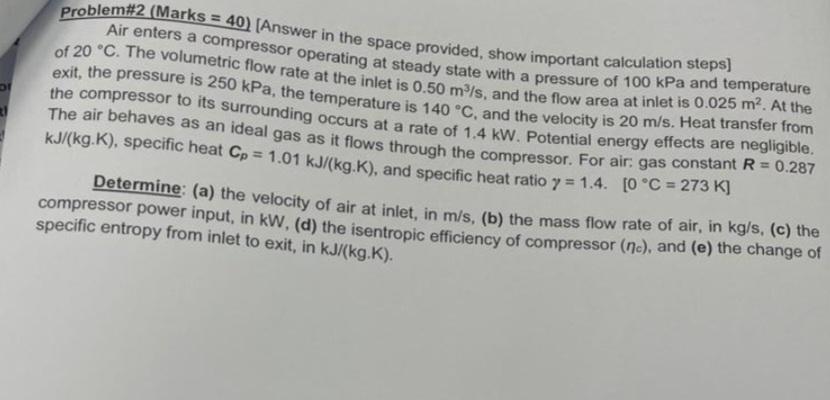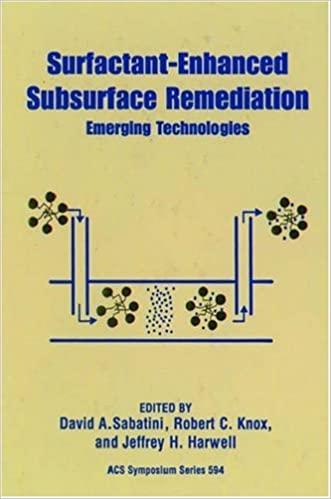Question
Problem#2 (Marks =40 ) [Answer in the space provided, show important calculation steps] Air enters a compressor operating at steady state with a pressure of
Problem#2 (Marks
=40) [Answer in the space provided, show important calculation steps]\ Air enters a compressor operating at steady state with a pressure of
100kPaand temperature of
20\\\\deg C. The volumetric flow rate at the inlet is
0.50(m^(3))/(s), and the flow area at inlet is
0.025m^(2). At the exit, the pressure is
250kPa, the temperature is
140\\\\deg C, and the velocity is
20(m)/(s). Heat transfer from the compressor to its surrounding occurs at a rate of
1.4kW. Potential energy effects are negligible. The air behaves as an ideal gas as it flows through the compressor. For air. gas constant
R=0.287
k(J)/(kg.K), specific heat
C_(p)=1.01k(J)/(kg.K), and specific heat ratio
\\\\gamma =1.4.,[0\\\\deg C]
=[
273(K)]\ Determine: (a) the velocity of air at inlet, in
(m)/(s), (b) the mass flow rate of air, in
k(g)/(s), (c) the compressor power input, in
kW, (d) the isentropic efficiency of compressor
(\\\\eta _(c)), and
(e)the change of specific entropy from inlet to exit, in
k(J)/(kg.K).

Step by Step Solution
There are 3 Steps involved in it
Step: 1

Get Instant Access to Expert-Tailored Solutions
See step-by-step solutions with expert insights and AI powered tools for academic success
Step: 2

Step: 3

Ace Your Homework with AI
Get the answers you need in no time with our AI-driven, step-by-step assistance
Get Started


